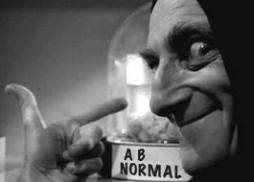

Know that my thoughts are supported by my own research, but like in previous and subsequent notes, I do not include reams of data with mind-numbing statistics. I am certain that anyone, including me, can find research to support a self-serving hypothesis. Surely, there are countless persons with contradictory opinions to mine, and I recognize our mutual freedom of speech to be able to express them.
Much is being written about the disappearing middle class, today’s modern family. While it is hard to understand why governments and too-large-to-fail financial institutions are able to run unimaginable deficits, it is important to note that families aren’t able to conduct their financial affairs similarly. A look at evolving spending pressures on some members of the new middle class, defined being at or ABOVE average family income, may conclude that some people have unusual (maybe excessive or unnecessary) expenditures for a multitude of budget items, including housing, cars, gizmos & gadgets for communications, and entertainment . This is not a vindication of anyone in the lower 50% of income levels, only a look at those who have achieved middle class income status and seem to be struggling with monthly cash flow issues too often.
Most recently, George Friedman waxes eloquently in “The Crisis of the Middle Class and American Power” about differences in the lives of families from the 1950’s-1960’s and today, in 2013. He concluded that for those of us who lived in the 50’s and 60’s, “It was not an easy life and many luxuries were denied us, but it wasn’t a bad life at all.” It is this admission that begs for more explanation. Mr. Friedman continues with an adequate comparison of the costs of providing basic essentials in both time periods of then and now. It is hard to disagree with any researcher’s math of the large differences in housing costs, food & clothing, health insurance and necessary car expenses. It is easy to conclude that today’s costs are ridiculously higher for families providing these fundamental living requirements. This observation is unchallenged by this author.
It is, however, similarly important to note that today’s middle class has accepted demands for additional luxuries as requirements for ” basic needs,” those that did not exist in neither Mr. Friedman’s nor my world in the 50’s and 60’s. Let’s review a few of these and note the additional monthly cost of each. The first of these is that today the middle class demands a different kind of housing; today’s house, apartment, or condo is bigger and better than five decades ago. Air conditioning is standard, which significantly adds to utility costs. Uncountable electric appliances are in everyone’s kitchen, family room, den, and utility room…flat screen TV’s, microwave ovens, computers, and washers & dryers…just to name a few. These demand additional initial outlays and operation costs including increases of utility costs.
Secondly, auto selection is a lot different decision for most middle class families than the 50’s or 60’s. Rather than settling for a pre-owned (very used) car, the primary vehicle now is probably a minivan or SUV and most likely it is replaced more frequently, in order to add the most recent driver accessory. Today, this car has a sun roof, power steering & windows, hand-free cell phone capability, a third seat area, and a TV monitor for in-ride movies. While it is easy to blame the cost of gasoline and new car sticker price as the most important transportation cost rises, it is essential to look “under the hood” and note the additional upfront outlays for newly-necessary gadgets for our driving experiences.
Another cost that the new middle class freely elects to absorb as a now necessary ingredient of normal monthly living expenses is increased (limitless) communication abilities. A peek at this category’s expense in the 50′ & 60’s shows a $5 monthly single in-home telephone bill and the cost of a black & white TV, with free access for 3-5 network stations. Let’s take a look at today’s house: it has at least two cell phones, umpteen TV’s with cable-dish access, and internet capabilities for at least one computer. Without considering the purchasing requirements for these devices (including a new I-phone, I-pad, or I-something every few months), a calculation of the just monthly fees for each of these embarrassingly boggles one’s mind.
A last new cost associated with the new middle class is entertainment costs. In the 50’s & 60’s most of us were satisfied with eating out once @ week, enjoying a drive-in movie (with popcorn and coke) on the weekend and playing in the back yard or sharing time with each other at neighborhood or school functions. Not only do most of these activities seem laughable to today’s not-so-nuclear families, but the new requirements for entertainment seem boundless. A few of these are: several meals at fast food and low budget restaurants (Chic Filet, Micky D’s, Applebee’s, etc.), wrapped inside a fine dining experience once or twice a month (newest local specialty restaurant). When one adds a stop at Starbucks for a $4 cup of Java a couple times each week, just eating costs alone seem staggering. Now let’s add another required entertainment need for the new family form 2013…kid’s team sports fees, including driving costs to-from virtually every activity imaginable for our soccer-mom kids. Today, a family actually has to pay for venues so their kids can have fun and grow up with acceptable social skills.
A few other not-so-obvious new costs for 2013 middle class families pop up with a closer look at a year’s end budget review: trips to Vegas, where it is important to have an experience that “stays in Vegas,” impulsive on-line shopping, which has added a newly diagnosed middle class suburbanite: the shop-o-holic. New pressures exist to purchase must-have clothing items like the newest Nike shoes for each 13 year old future basketball phenom, the very hippest jeans and mom’s latest make-up accessory for reducing visibility of aging . Need we continue?
In conclusion, while few contest the impact that inflation has had on family living expenses for basic essentials like food and shelter since the 50’s-60’s, it appears that evolving peer pressures have resulted in increased consumer spending of middle class members. The pertinent question may be, “Once a family’s earnings provides an entry into the middle class, how does a family today continue to absorb additional costs of providing luxuries that families from the 50’s & 60’s never considered possible, let alone necessary for daily pursuit of happiness?”
While it may be possible for today’s modern family to earn the way into the middle class with education and desired employment, it is entirely possible that some families may be over-buying their way to a quick exit out of the middle class via unserviceable debt and eventual bankruptcy. I suppose the trains of progress never stop, but it may be beneficial for some families to consider a cost-value analysis for each trip.






